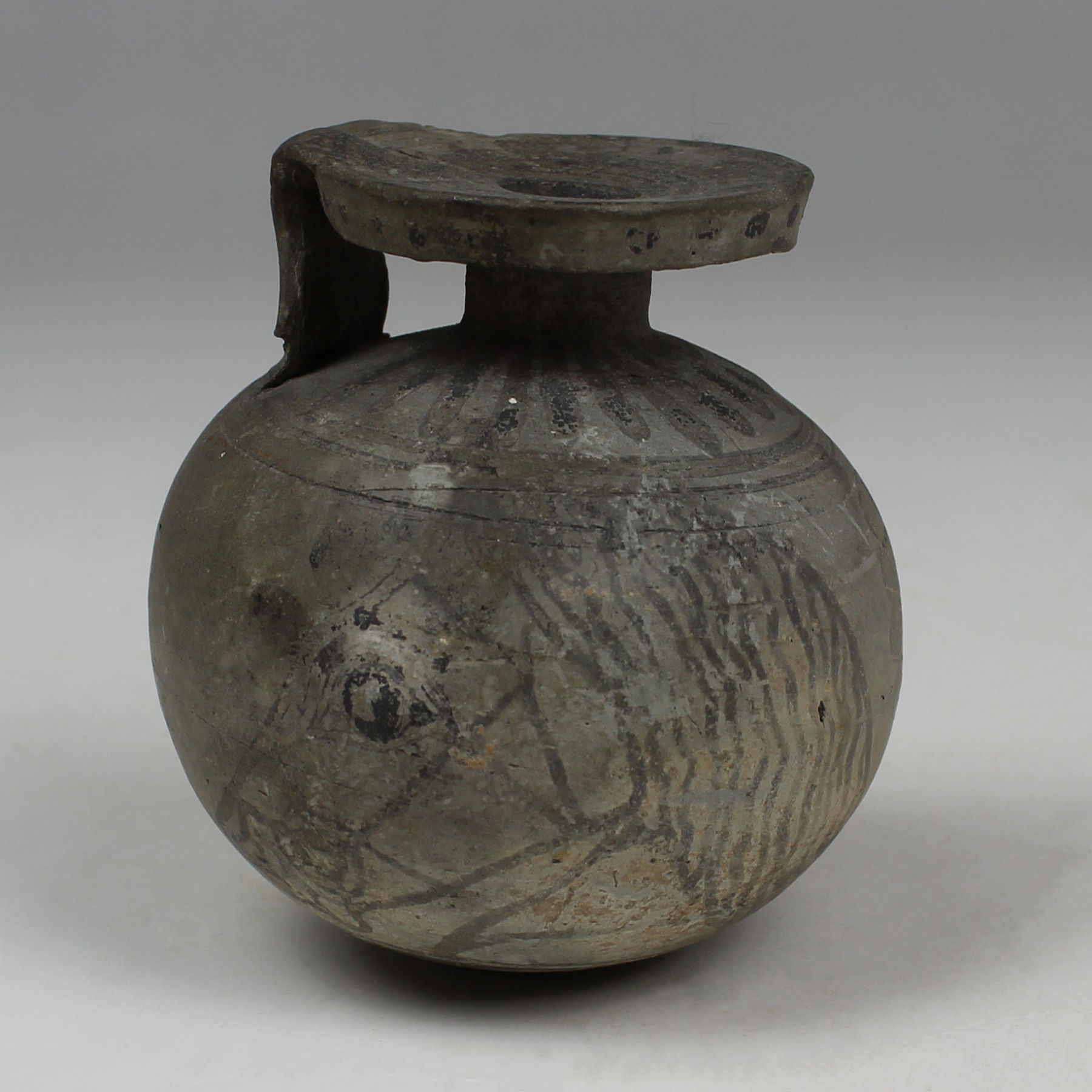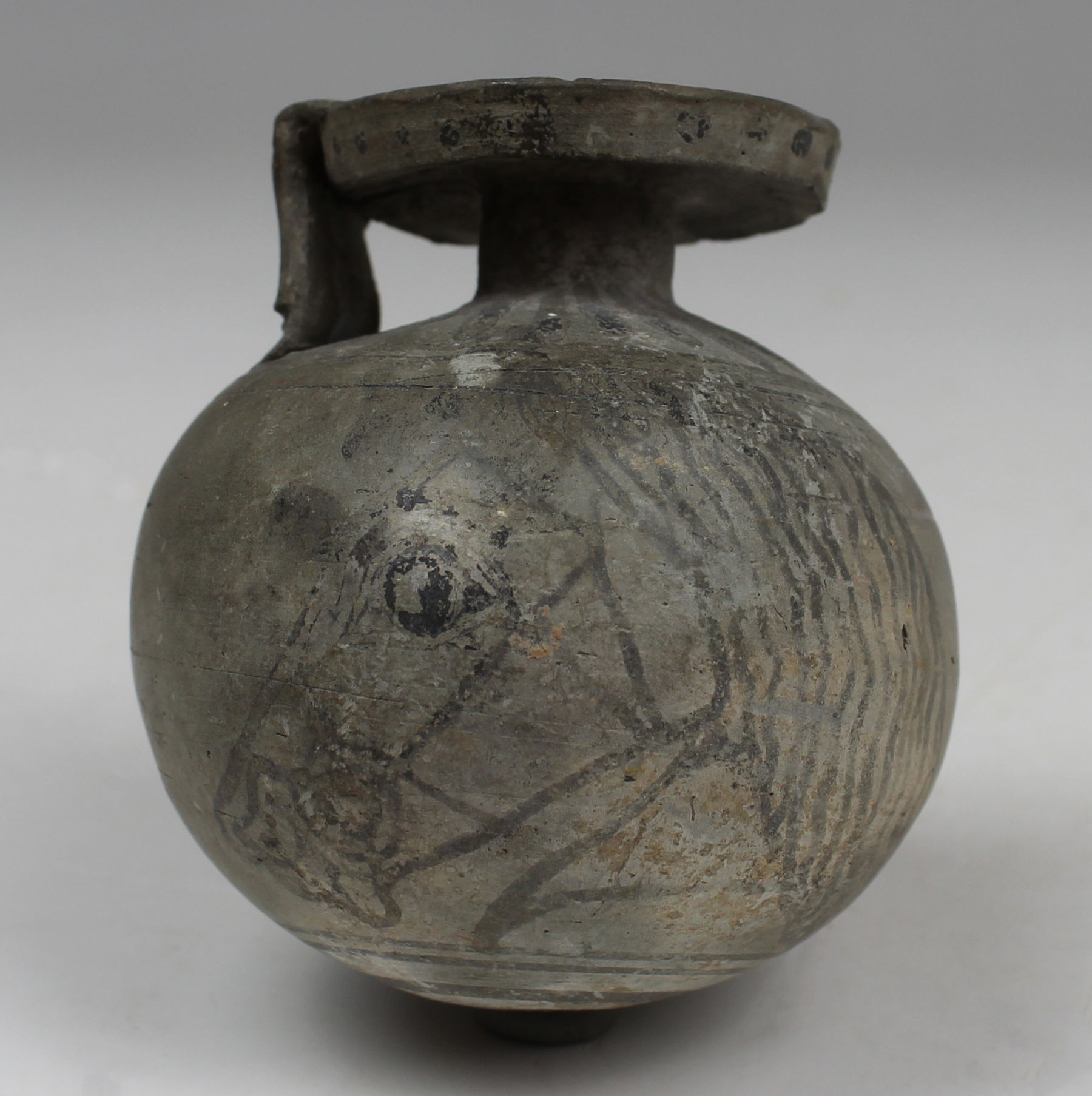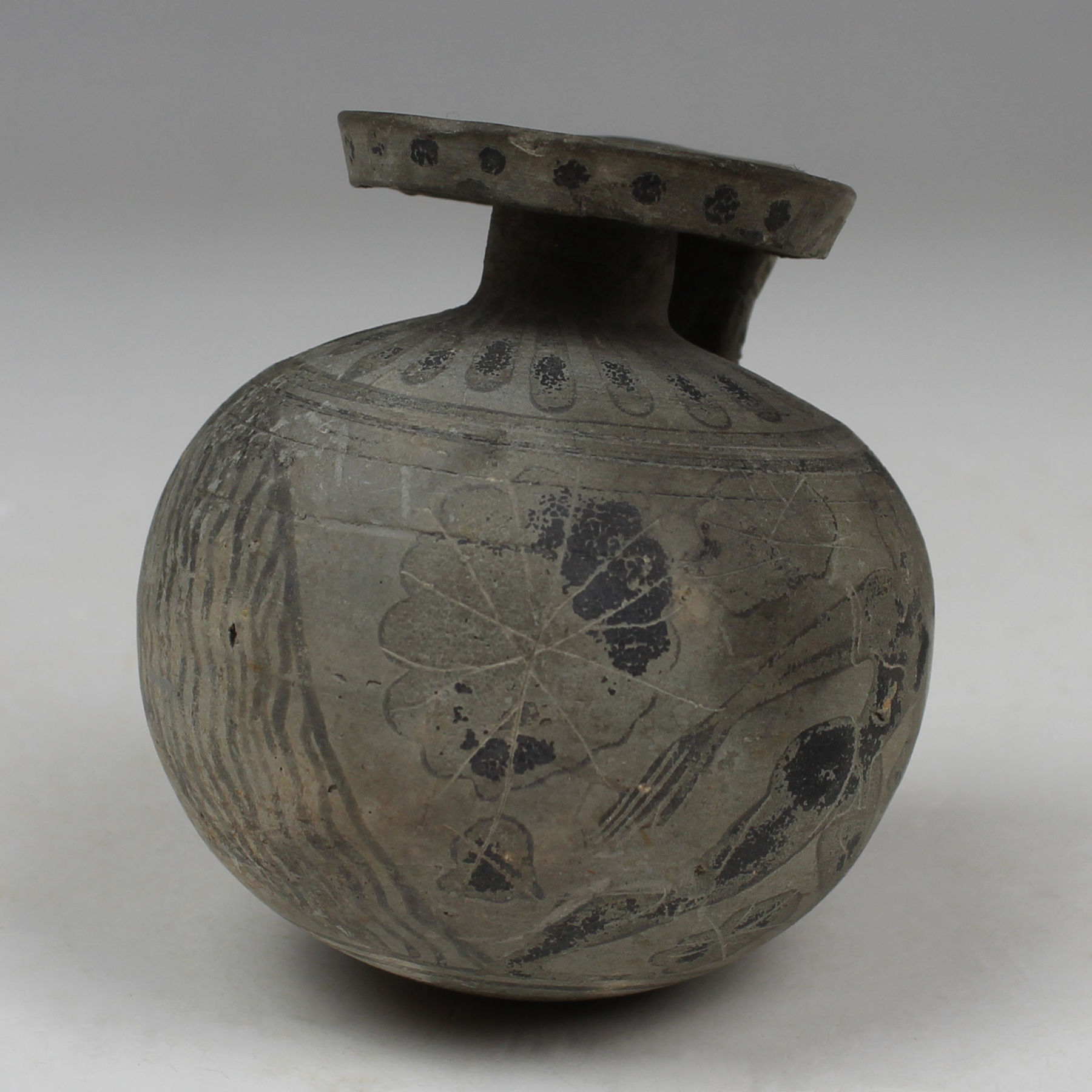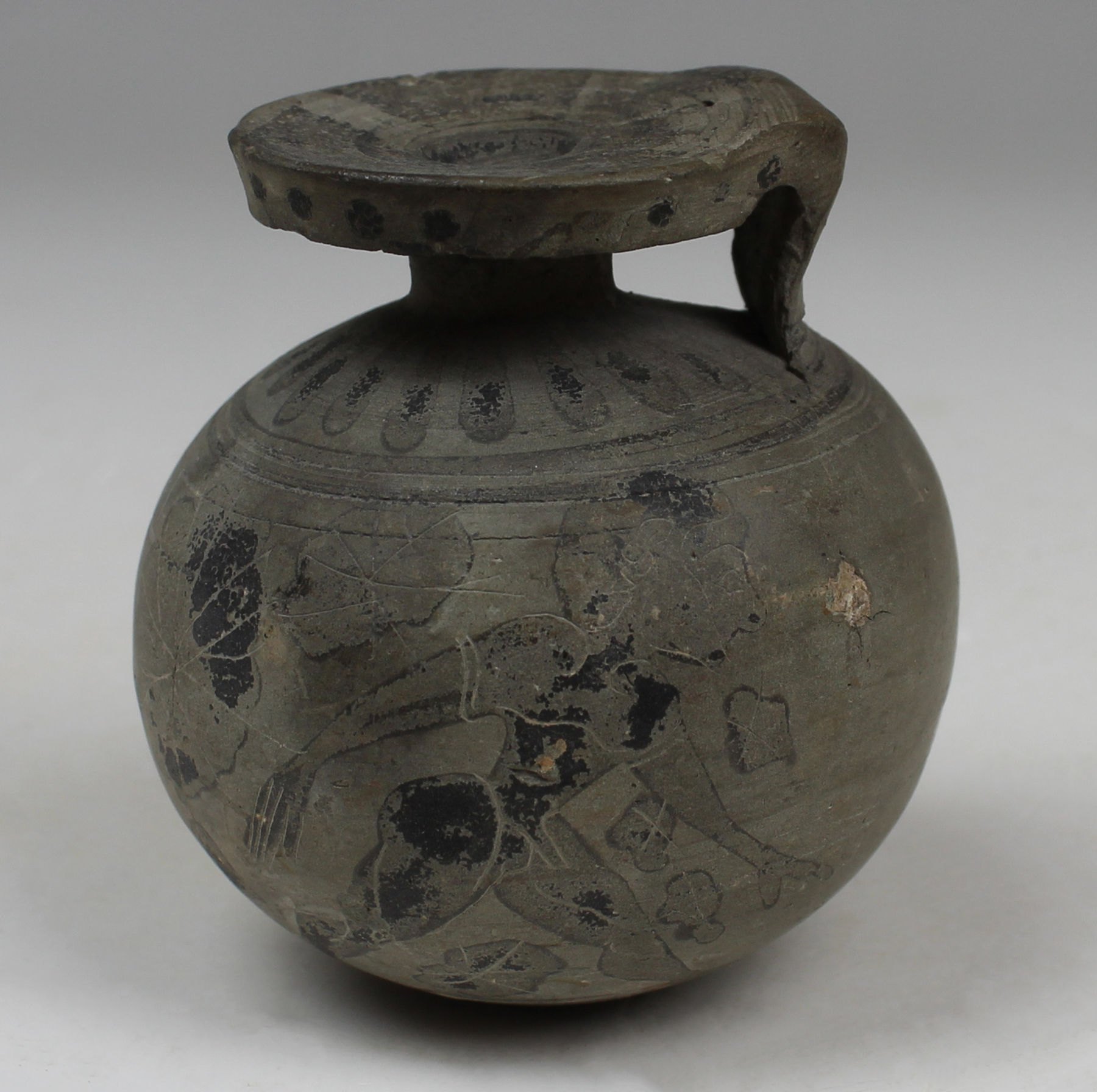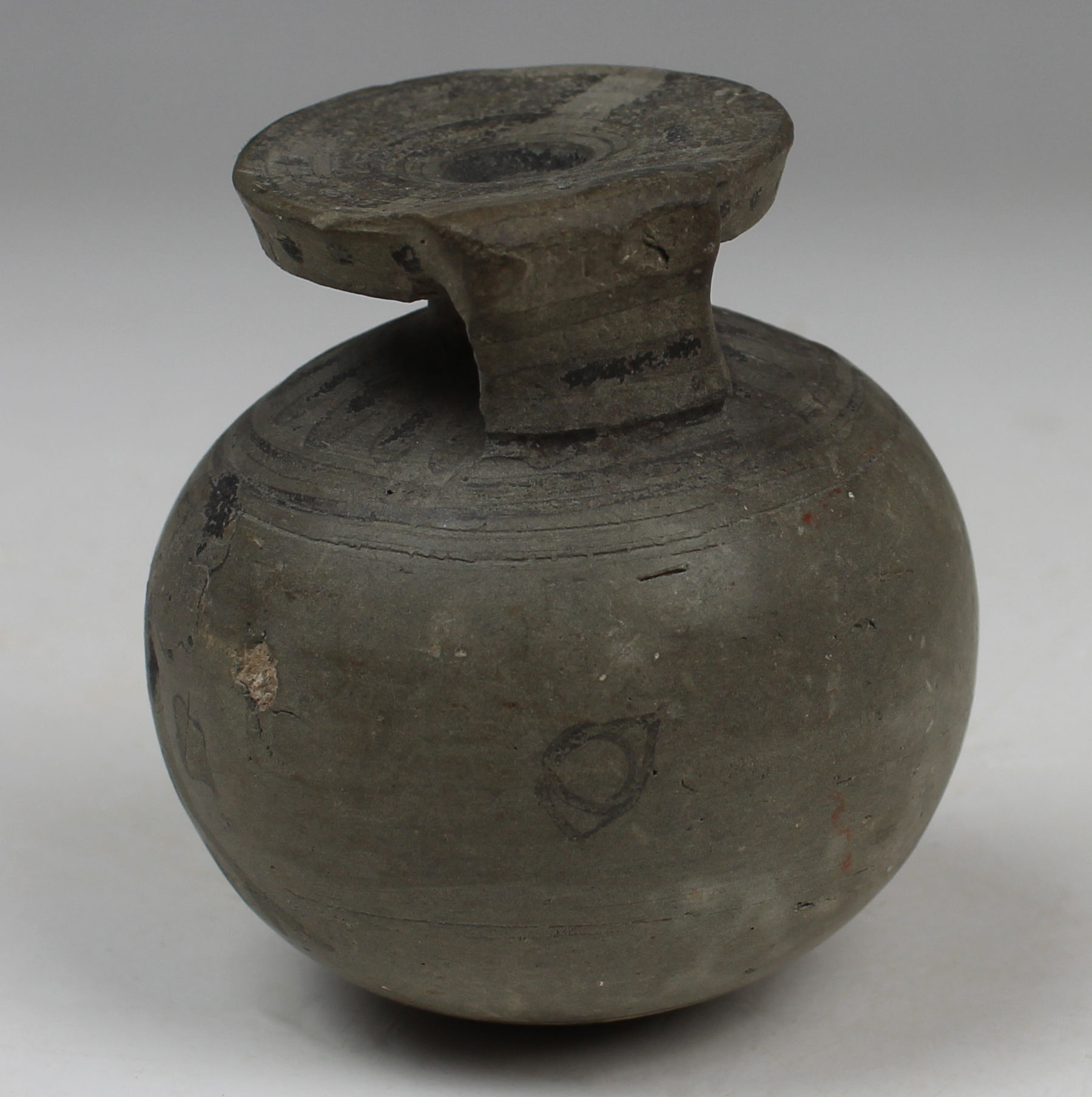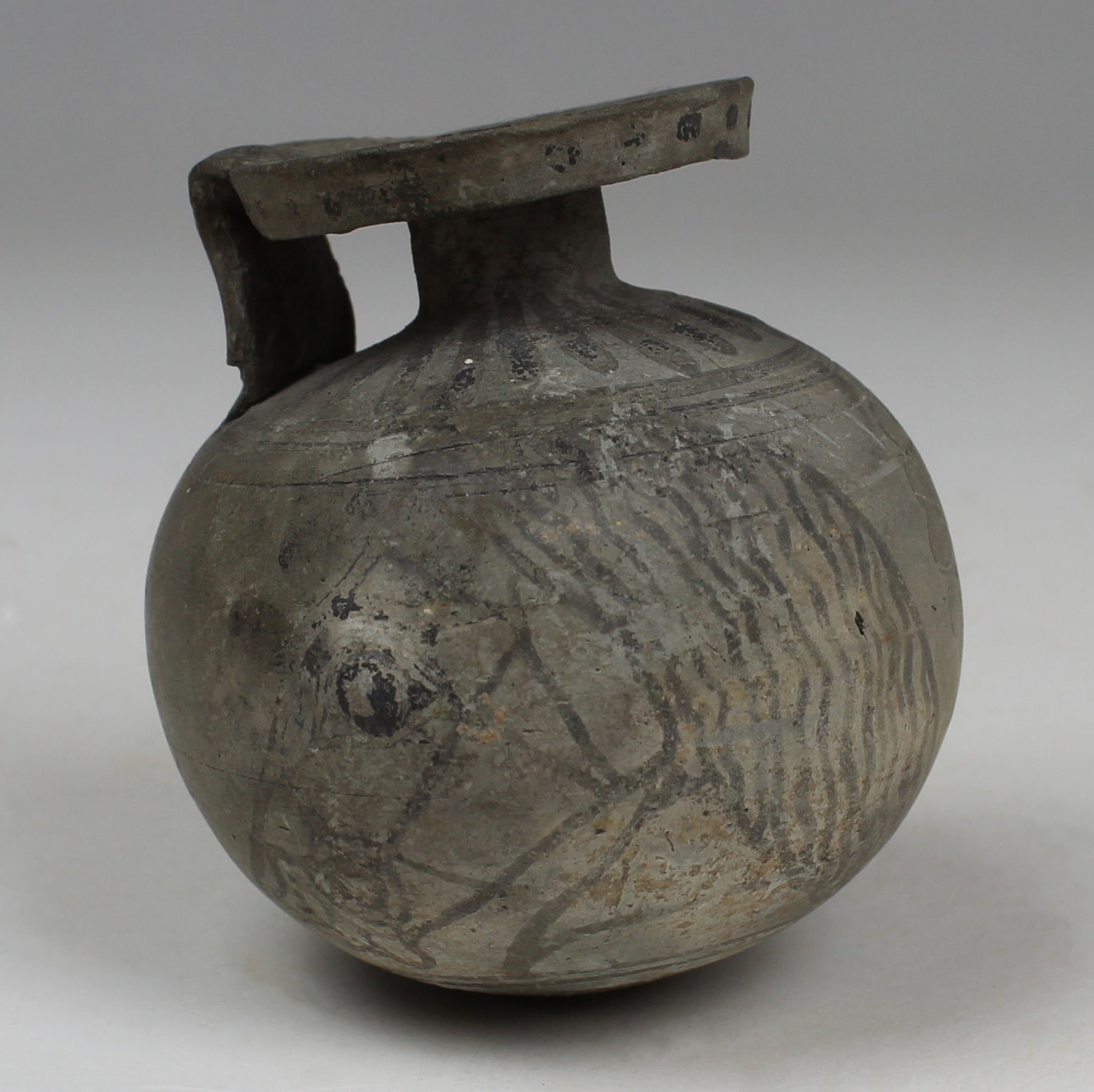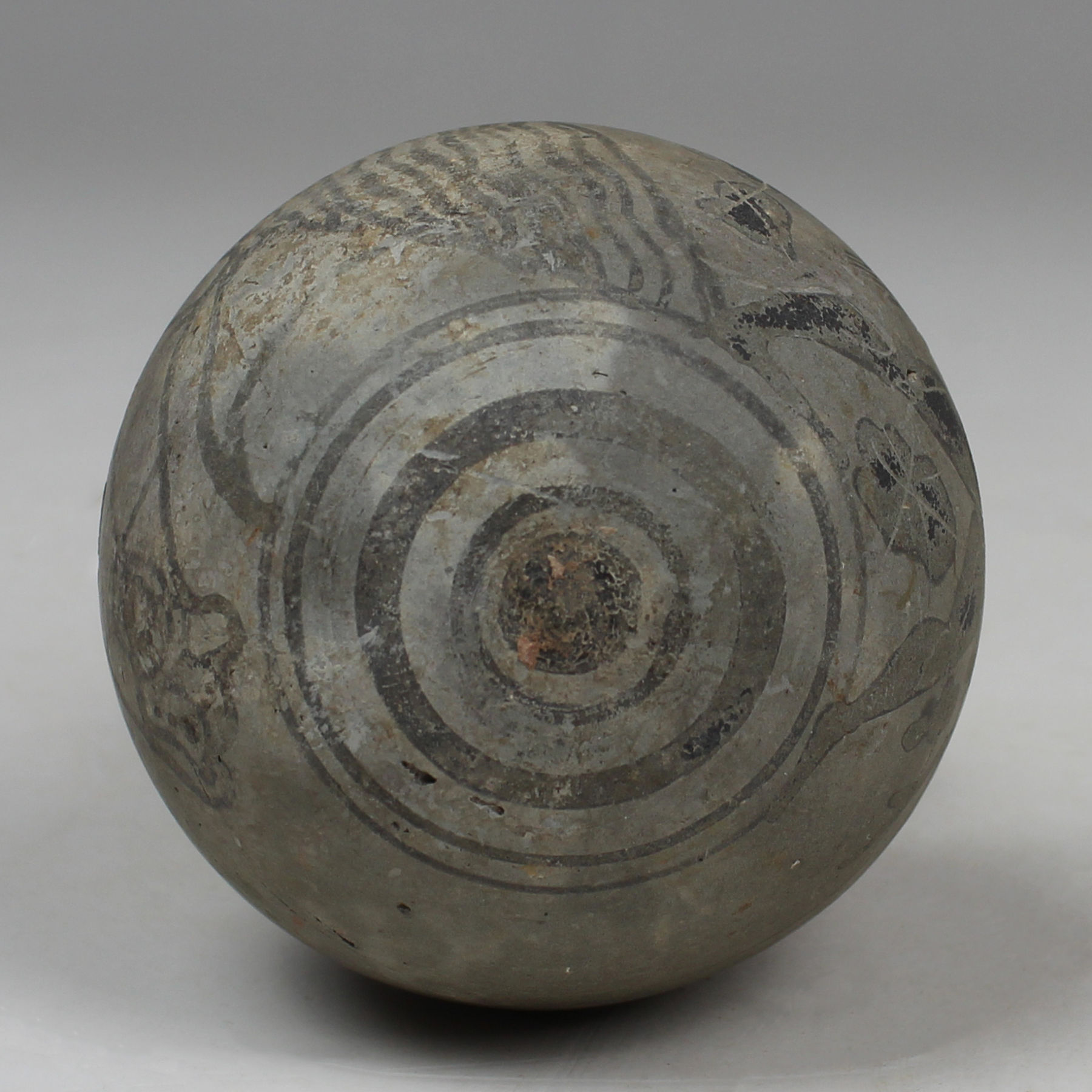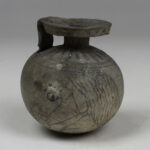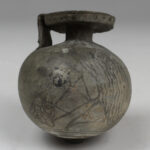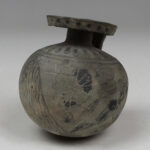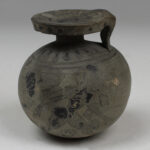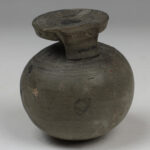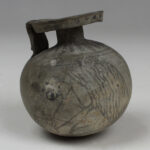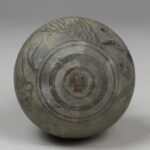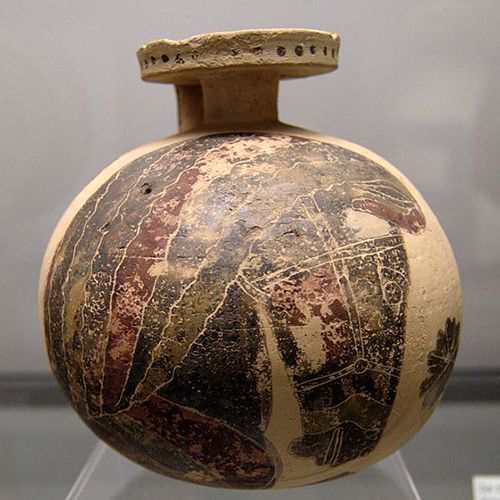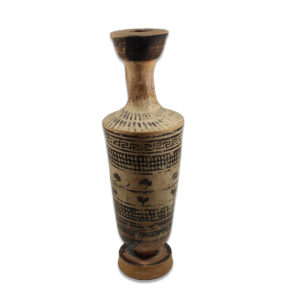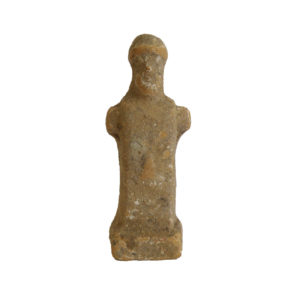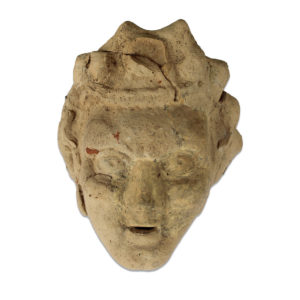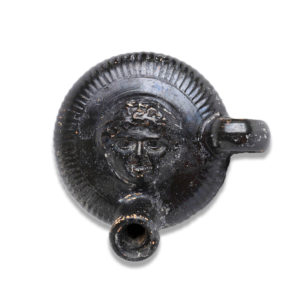Description
| ITEM | Aryballos depicting a horse head |
| MATERIAL | Pottery |
| CULTURE | Greek, Corinthian |
| PERIOD | 7th Century B.C |
| DIMENSIONS | 62 mm x 55 mm diameter |
| CONDITION | Good condition |
| PROVENANCE | Ex Swiss private collection, M. H. D., acquired between since 1919 |
The Greek aryballos, particularly during the Corinthian period, stands as a testament to the skill and artistry of ancient Greek ceramic craftsmanship. An aryballos is a small, globular vessel designed for holding oil or perfumes, characterized by its narrow neck and rounded body. In the Corinthian period, spanning from the 7th to the mid-6th century BCE, Corinth emerged as a prominent center for pottery production, and the aryballos became a popular form of artistic expression within this context.
Corinthian aryballoi are renowned for their distinctive black-figure technique, wherein the figures and decorative elements are painted in black slip against the natural red clay background. The scenes depicted on these vessels often revolve around mythological narratives, such as battles, athletic competitions, or religious rituals. The intricate details and fine craftsmanship of Corinthian aryballoi reflect the technical mastery achieved by the potters of this era.
In the broader context of ancient Greek pottery, aryballoi served practical purposes, being used for storing and transporting oils for personal grooming or religious ceremonies. The vessels were often adorned with intricate patterns and intricate figural designs, showcasing the Greek artisans’ ability to seamlessly merge functionality with artistic expression.


